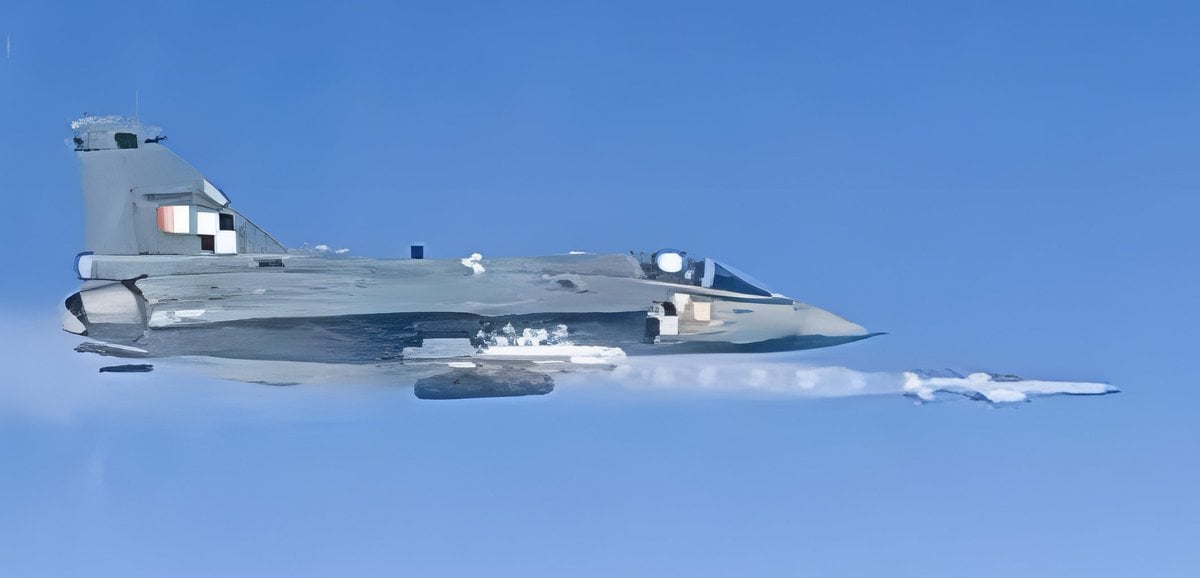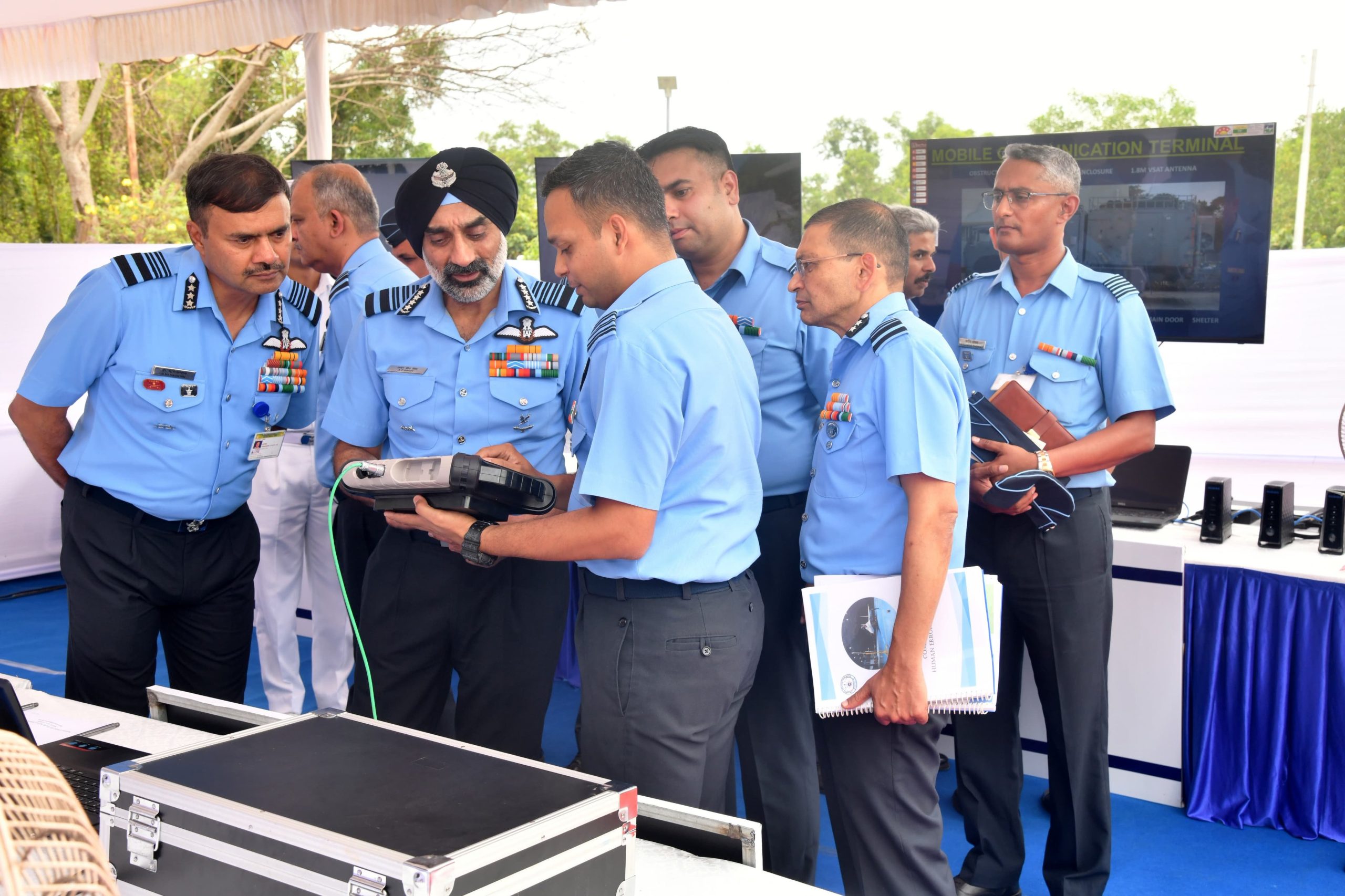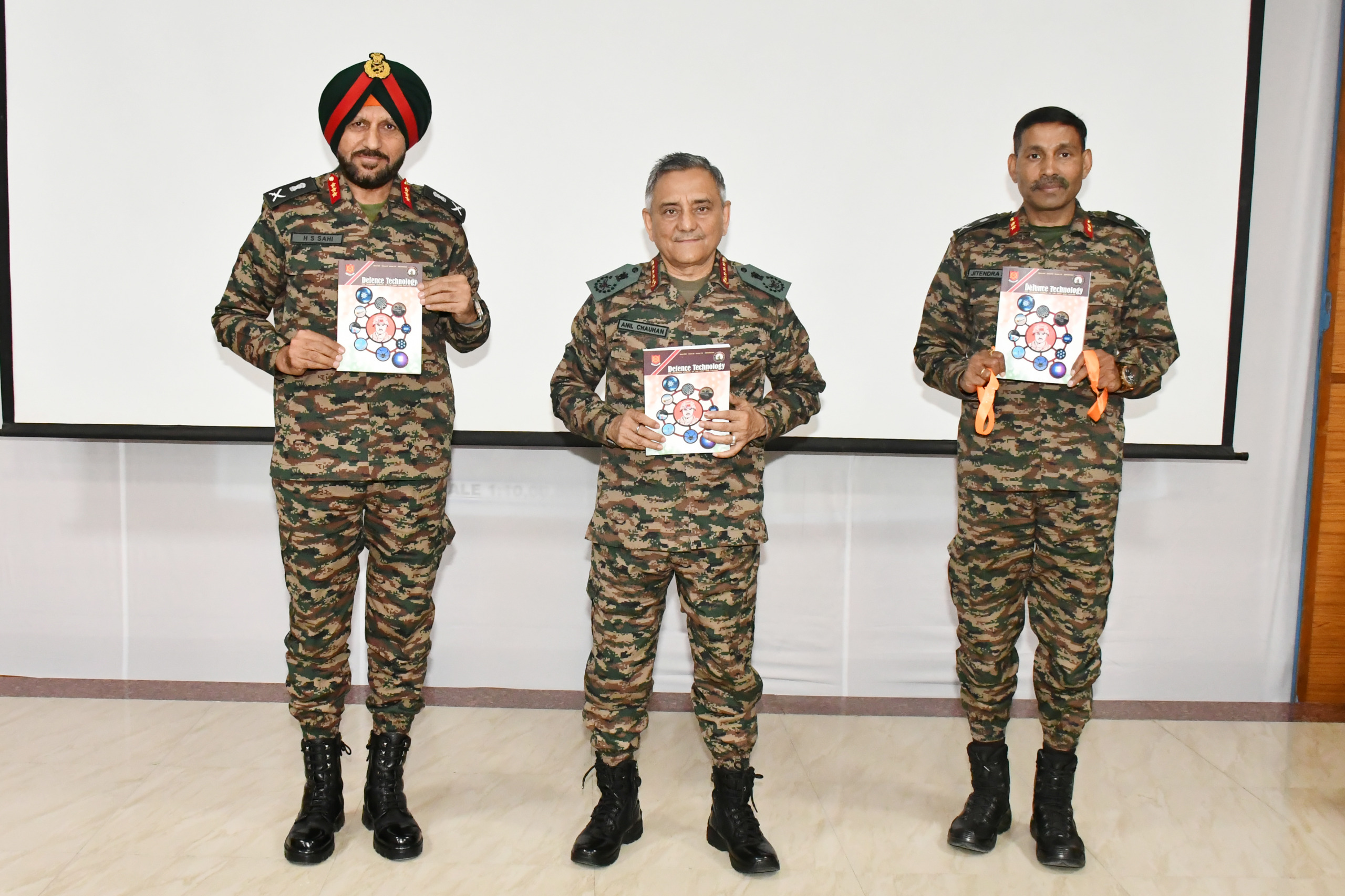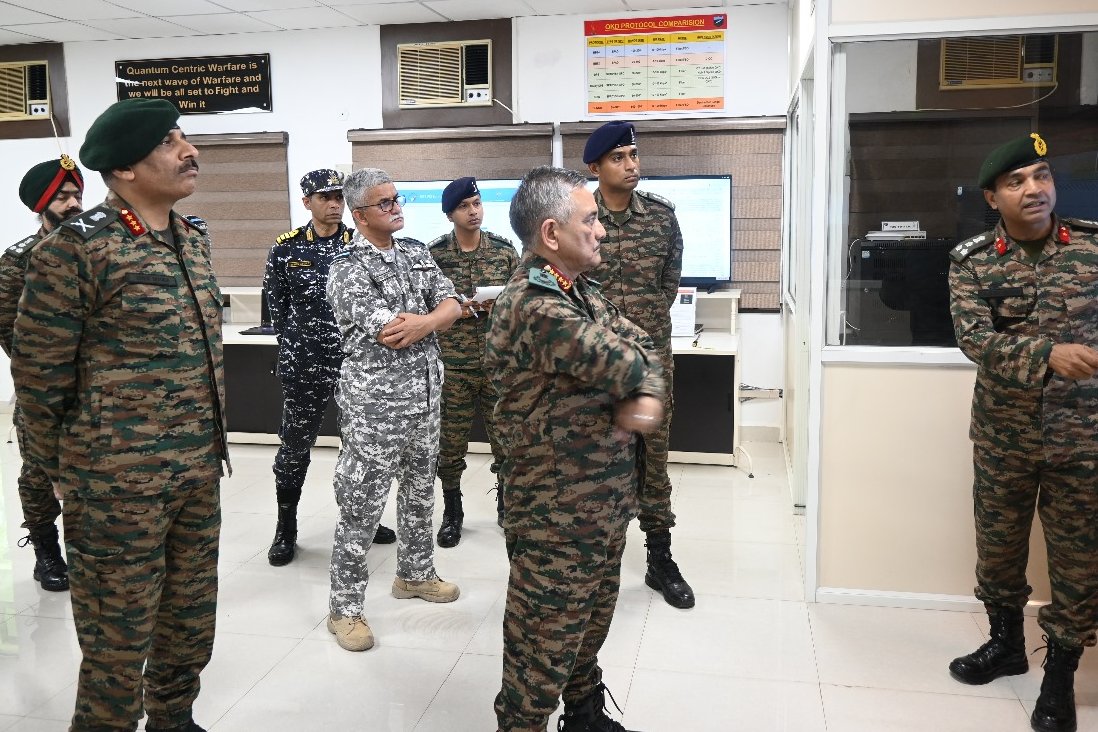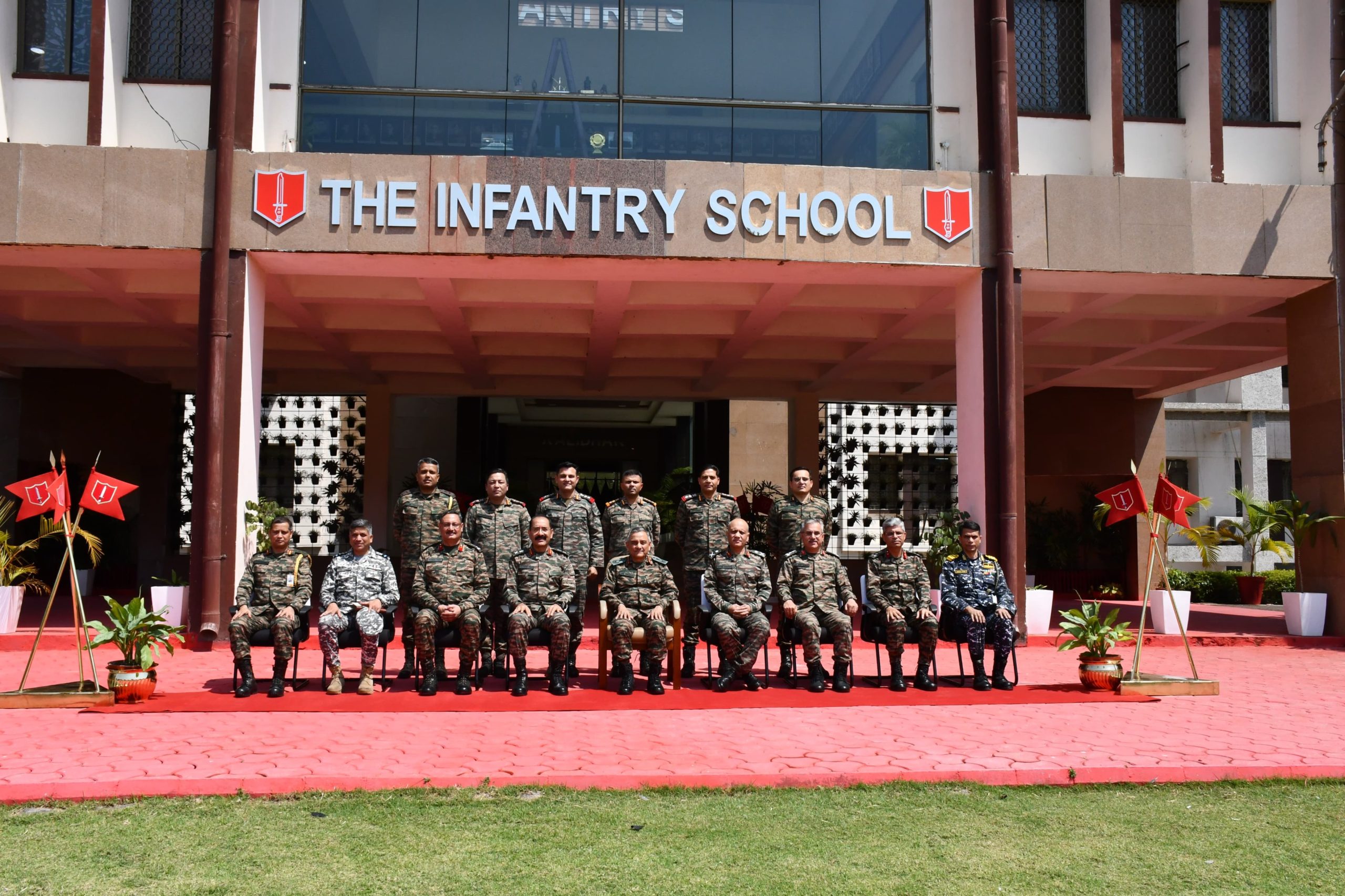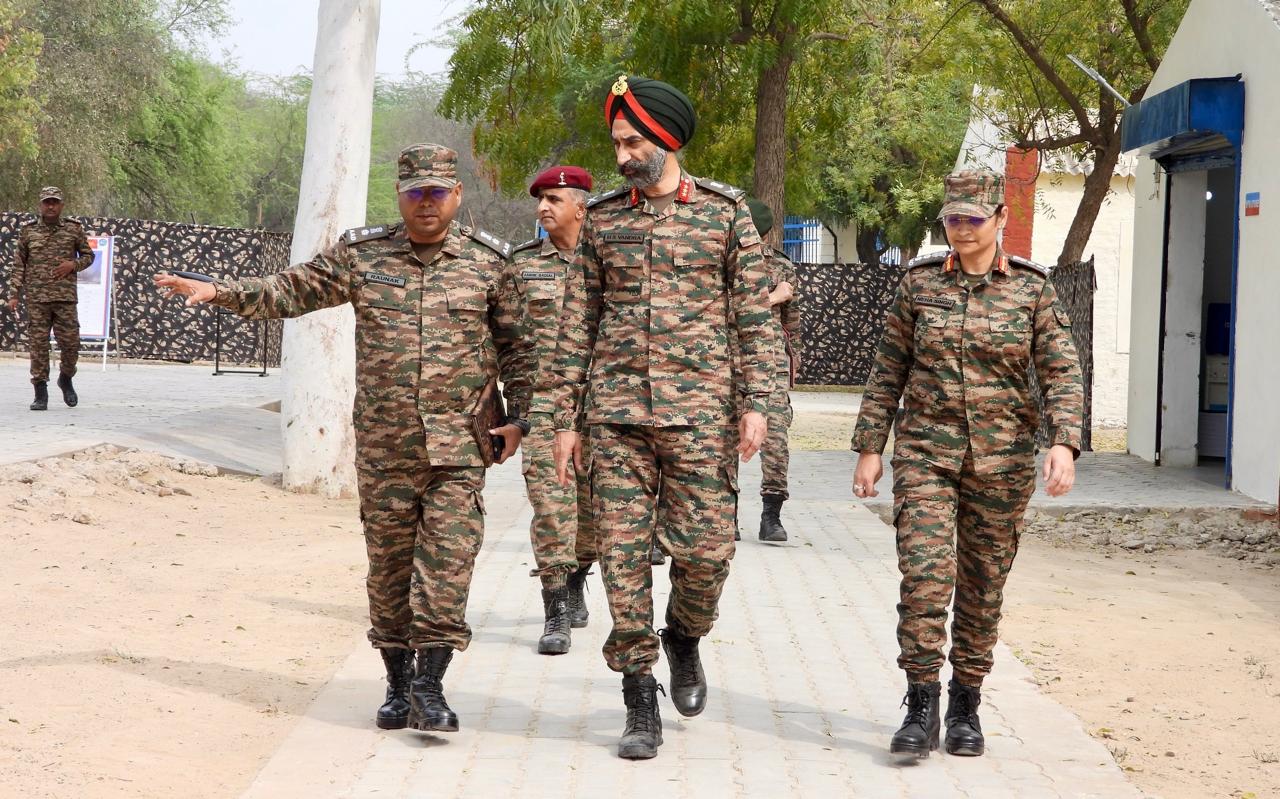Tejas LCA AF MK1 Successfully Test-Fires Indigenous ASTRA BVRAAM
In a significant achievement for India’s indigenous defence technology, the Light Combat Aircraft (LCA) AF MK1 successfully test-fired the ASTRA…
Air Chief Marshal AP Singh Addresses Commanders’ Conference at Southern Air Command
Air Chief Marshal AP Singh, Chief of the Air Staff (CAS), visited Headquarters Southern Air Command (SAC) in Thiruvananthapuram, Kerala,…
CDS General Anil Chauhan Addresses Future Leaders at Army War College Mhow
Chief of Defence Staff (CDS) General Anil Chauhan delivered an insightful address to the future leaders of the Indian Armed…
CDS General Anil Chauhan Reviews MCTE Mhow
Chief of Defence Staff (CDS) General Anil Chauhan visited the Military College of Telecommunication Engineering (MCTE), Indore, where he was…
General Anil Chauhan Reviews Infantry School Mhow
Chief of Defence Staff (CDS) General Anil Chauhan visited the Infantry School, Mhow, where he was briefed on the training…
Lt Gen Harbinder Singh Vandra Reviews The Valiant Wings Under Sapta Shakti Command
Lieutenant General Harbinder Singh Vandra, Chief of Staff (COS), Sapta Shakti Command, visited ‘The Valiant Wings’ on March 11, 2025,…

